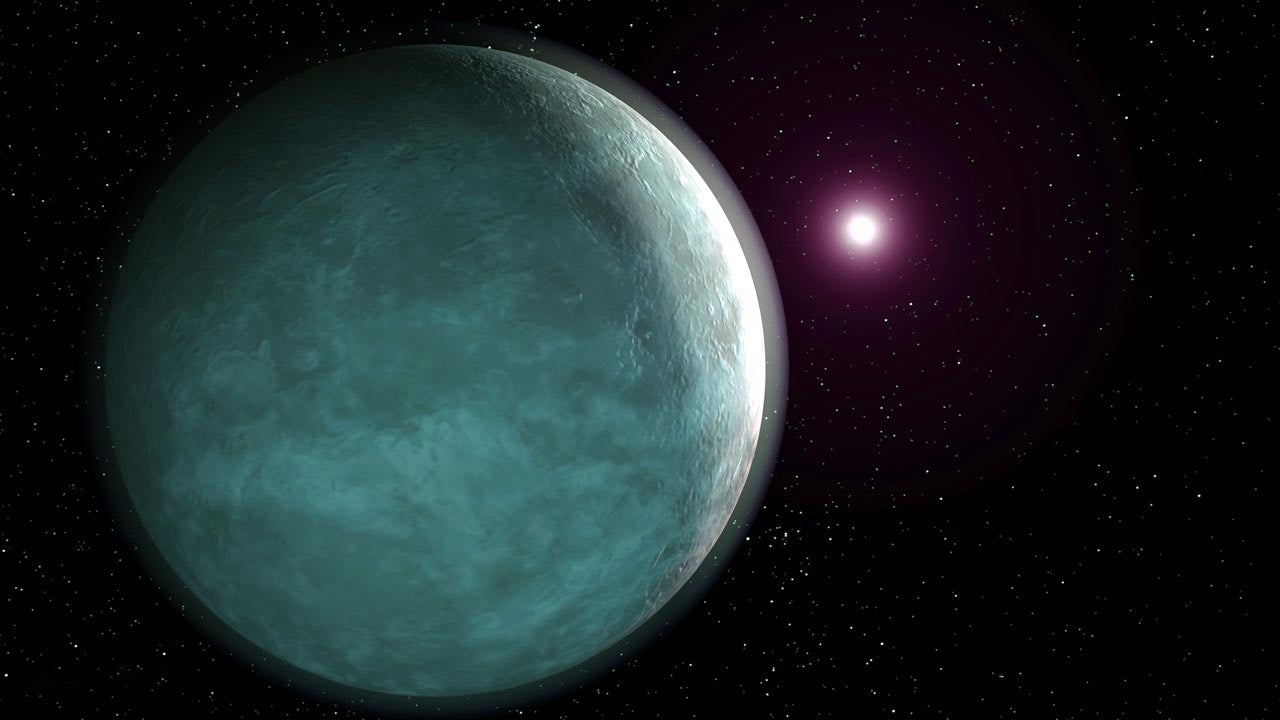
Kepler-1520b, one known dissolving exoplanet, is pictured here in artist’s conception of how it might look. Credit: NASA.
Astronomers rarely get a chance to crack open a planet and see what’s inside, but in two cases a star is doing the job for them, and they’re using that opportunity to understand what makes solar systems tick.
The two unfortunate planets in question are Kepler-1520b and K2-22b. First discovered in 2012, but not confirmed until 2016, Kepler-1520b is a Neptune-like planet sitting almost 2,000 light-years away. Weighing more than 28 times the mass of the Earth, the planet has an extremely unusual orbit, where it’s almost a hundred times closer to its parent star than the Earth is from the Sun. It’s so close that it completes an entire orbit in just under 17 hours.
K2-22b couldn’t be more different. It’s much smaller, roughly 1/50th the mass of the Earth. It orbits closely around a small red dwarf star about 800 light-years away from us.
But both planets, despite their different sizes and host stars, share one thing in common: they’re getting eaten alive.
Both planets orbit so closely to their parent stars that the gravity of those stars is ripping apart the planets. The cause is the same interaction that creates the tides on the Earth. Simple differences in gravitational strength across the width of the planet can become so strong that they do more than stretch and squeeze, they start to deform the planet to such a degree that bits of it lose their gravitational grip completely.
This process has been happening for quite some time to both Kepler-1520b and K2-22b, to the point that both dissolving exoplanets have trails of debris leading and following them in their orbits. This debris made their initial discoveries so complicated because it was difficult for astronomers to clearly identify the presence of a planet as it blocked the light from its star when it crossed in front of it. And while astronomers were able to estimate the total mass of each planet plus its debris, they could not get an accurate assessment of the size of each planet, a crucial requirement for estimating their densities and compositions.
Previous studies on the size of K2-22b have pegged to around 70 percent the width of the Earth. More recently, a pair of astronomers have deduced that instead K2-22b has a radius of around 15,000 kilometers, which is roughly 2.5x times the width of the Earth. The wildly varying estimates show just how difficult it is to separate the size of the planet itself from the total size of the debris field surrounding it – especially when all the astronomers have to work with is the amount of light blocked when the planet crosses in front of its star.
Lessons learned from dissolving exoplanets
Astronomers are very interested in curious systems like these. For one, they offer fascinating glimpses into the extreme end of planetary dynamics. For example, these planets in particular may only live for a few more million years before they’re completely obliterated, and so they allow astronomers to study almost in real-time the complex network of gravitational forces that can rip apart an entire world.
These planets also give astronomers the opportunity to look inside rocky Earth-like planets. Because the entire debris field crosses in front of the parent star, astronomers can apply spectroscopy to determine what the planets are made of. Usually astronomers just have to guess, based on a planet’s density and size, and use mathematical models to approximate a likely distribution of interior elements. But with Kepler-1520b and K2-22b, their guts are on full display.
Astronomers continue to be surprised by the wide variety of planetary systems that they encounter. In this case, they still do not fully understand what happened to these planets. Perhaps a collision sapped orbital energy from them, forcing them into closer orbits. Or perhaps there was some long-term interaction with an unseen giant companion that triggered a migration. Either way, something forced these planets into orbits too close for comfort, and understanding that process can help astronomers more fully understand the rich dynamics that govern the systems across the galaxy.





